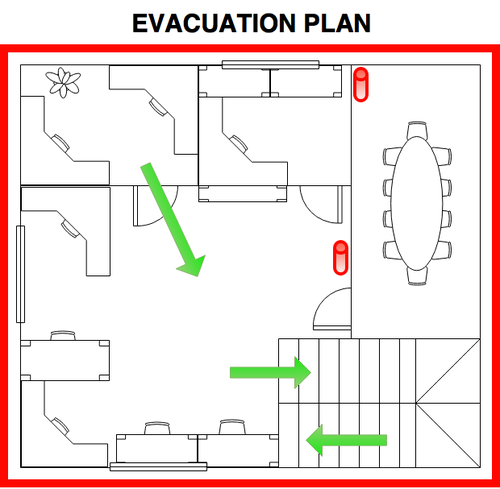Sept. 1, 2017

Emergency Plans are a legal requirement for all Australian businesses under the Work Health and Safety Act.
"PCBUs (person conducting business or undertaking) must ensure that an emergency plan is prepared for the workplace, including for workers who may work at multiple workplaces."
The purpose of the plan is make sure everyone knows what to do to minimise the consequences. It will contain instructions regarding your planned response to emergencies that could happen at your workplace.
Your emergency plan must include:
- evacuation procedures
- how to notify emergency services
- providing medical treatment and assistance, and
- methods of communication
It's too late to read a plan when the emergency is already underway, so you must train your people in implementing the emergency procedures.
You also must test your emergency procedures to ensure they are effective. It's is far better to say "we should have ... " under practice conditions, rather than after an actual emergency. The emergency plan should include information on how often you will conduct tests (at least every 12 months).
Step 1. Determine what could happen
You don't need to have emergency procedures to cover every imaginable situation - only those that apply to your location. Start by assessing what emergency situations could arise.
Most people are familiar with planning for fire and evacuation. You just need to add other emergency situations that you might experience, e.g., flooding, weather events, a medical emergency, gas release, civil unrest, etc.
The location and nature of your workplace, the number of people, and the hazards that may be present will affect what you have to plan for:
- Do you have visitors or the public on your site?
- How do emergency vehicles find and access your site?
- Do you have hazardous chemicals on site?
- What about close neighbours?
If there are other businesses close by, you'll need to consider if their emergencies could affect you. It works both ways - if you have a fire then one of the steps in your response will be to warn your neighbours, so you'll need their contact details in your plan.
Step 2. Plan a response for these emergencies
Think about the actions you want to take in responding to each emergency identified.
It's obviously the first priority, but don't limit your plan to only protecting people. Planning actions for business continuity can make a big difference in the recovery process.
You'd have forewarning of emergencies like flooding or weather, so your plan might be to send everyone home and continue working remotely. What things should be done before you leave - e.g., move important records to the top floor. Who is responsible for doing that?
Just write down those basic steps.
Step 3. Train your people and test the plan
Post emergency procedures at your workplace so everyone can access them.
It's typical to see evacuation diagrams on the back of doors. It's a good idea to include emergency phone numbers and provide location information so the caller can help emergency services reach you (e.g. street address, nearest cross street, site access points).
You need to practice your response to all of the emergencies in your plan - not just fire and evacuation. Throw in a wrinkle now and then - such as a key staff member being absent.
Make sure you keep a record of these drills.
Step 4. Evaluate and adjust
After each practice, discuss how it went and whether anything needs to be improved. Update your plan with any changes.
Other resources
Have a look at this fact sheet on emergency plans from Safe Work Australia
There's also information on emergency plans in the Code of Practice for Managing the Work Environment and Facilities
BTW, the evacuation plan above was drawn in Toolbox - in the Documents module as a 'Diagram' drawn with the built-in drawing tool.